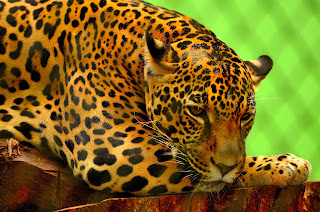Protecting the King of the Jungle: Jaguar Conservation and Threats!
Jaguars are one of the most magnificent and powerful big cats in the world. Jaguar conservation and threats it is our duty to deal with it. They are native to the Americas and occupy a range that extends from the southern United States to the northern part of South America. Despite their wide range, jaguar populations are facing numerous threats that are putting their survival in the wild at risk. In this article, we will explore the efforts being made to conserve jaguars and the various threats they face.
Jaguar Protection: Saving One of the World's Most Iconic Cats
Threats to Jaguars:
Jaguars are facing a range of threats, including habitat loss, poaching, and poaching by humans. As forests and other habitats are cleared for agriculture, urbanization, and other human activities, jaguars are losing the territories they need to survive. Additionally, many jaguars are hunted for their pelts, which are highly valued in the illegal wildlife trade.
Another major threat to jaguars is human-jaguar conflict. In some areas, jaguars prey on livestock, which can lead to conflict with local farmers and ranchers. In response, jaguars are often hunted or trapped, which further reduces their populations.
The Importance of Jaguar Protection:
In addition, jaguars are a keystone species, meaning that they play a disproportionately large role in their ecosystems relative to their abundance. The loss of jaguars can have cascading effects on other species and the overall health of their habitats.
Conserving Jaguars: The survival of jaguars in the wild is a priority for many organizations and governments. Conservation efforts for jaguars focus on protecting their habitats and ensuring the sustainability of their populations. To achieve these goals, conservationists are working to establish wildlife reserves and national parks, as well as collaborating with local communities to manage land use in a sustainable manner. Research and monitoring programs are also being conducted to gain a better understanding of jaguar biology and ecology. This information is used to inform conservation and management decisions.
Threats to Jaguars: Despite the efforts being made to conserve jaguars, they still face many threats in the wild. Some of the most significant threats to jaguars include:
Habitat Loss: The loss of critical jaguar habitats due to deforestation, urbanization, and agriculture is one of the biggest threats to jaguars. As human populations continue to grow, jaguars are losing their habitats at an alarming rate, making it difficult for these cats to find enough food and space to survive.
Hunting: Jaguars are still hunted for their fur and other body parts in many parts of their range. This illegal trade is driven by demand for luxury goods and traditional medicine, and it is putting a significant strain on jaguar populations.
Fragmentation of Populations: The fragmentation of jaguar populations as a result of habitat loss can lead to inbreeding, reducing genetic diversity and increasing the risk of disease and other health problems.
Conflicts with Humans: Jaguars sometimes come into conflict with humans when they prey on livestock or pets. This can result in retaliation from farmers and ranchers, leading to the killing of jaguars.
What Can Be Done to Protect Jaguars?
There are several steps that can be taken to protect jaguars and their habitats. One important step is to reduce habitat loss by protecting forests and other habitats where jaguars live. This can be achieved through the creation of protected areas, such as national parks and wildlife reserves, as well as through sustainable forestry practices that protect critical jaguar habitat.
Another important step is to reduce human-jaguar conflict by providing alternative livelihoods for local communities and helping to reduce the risk of jaguars preying on livestock. This can include measures such as providing compensation for livestock losses, improving livestock management practices, and installing deterrents such as electric fencing.
In addition, it's important to reduce demand for jaguar parts in the illegal wildlife trade by increasing awareness of the importance of jaguars and the consequences of their loss. This can include educational programs, public outreach campaigns, and law enforcement efforts to crack down on the illegal trade in jaguar parts.
Conclusion: Jaguars play a crucial role in their ecosystem, and it is important that we take action to protect these magnificent animals. By continuing to conserve jaguar habitats, conducting research and monitoring, and raising public awareness, we can help ensure a bright future for jaguars and the many other species that depend on them. Let's work together to conserve these iconic big cats and their habitats for generations to come.
3. What are some conservation measures being taken to protect jaguars? Conservation measures for jaguars include protecting and restoring their habitats, reducing hunting through law enforcement and community outreach, and promoting coexistence with human activities such as livestock production. Reintroduction programs have also been implemented in some areas. 4. What role do protected areas play in jaguar conservation? Protected areas play a crucial role in jaguar conservation by providing secure habitats for the species and reducing human impacts. However, it is important to ensure that these protected areas are effectively managed and adequately funded. 5. How can individuals help with jaguar conservation? Individuals can help with jaguar conservation by supporting conservation organizations, reducing their own impact on the environment, and advocating for policies that protect jaguar habitats and populations. They can also support sustainable and responsible tourism activities that benefit local communities and wildlife.






Comments
Post a Comment